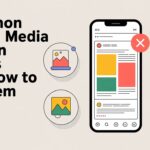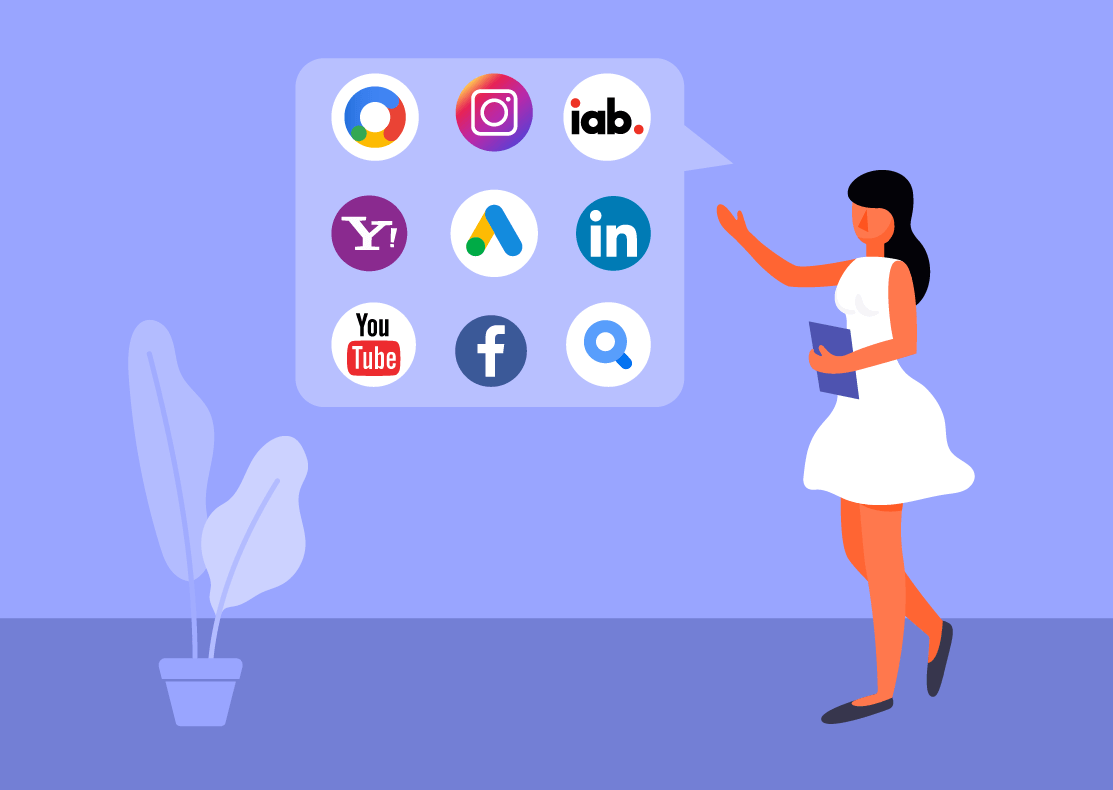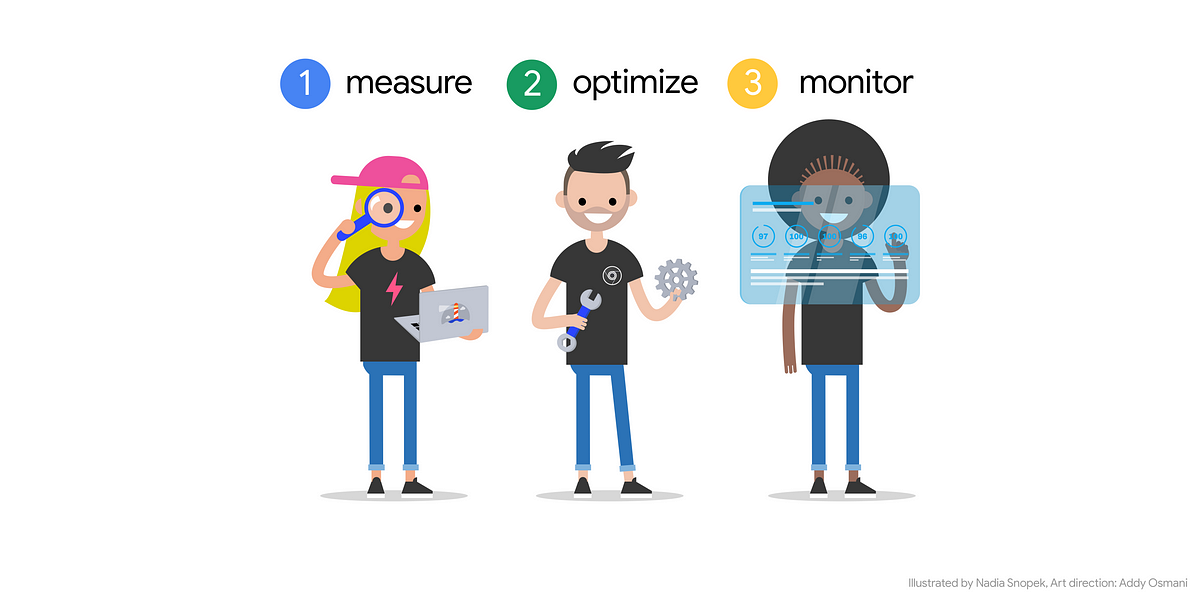
Common Social Media Design Errors and How to Fix Them
September 8, 2025
Key Lessons from PDPA Compliance Failures in Singapore
September 8, 2025In today’s competitive business landscape, organizations are increasingly adopting account-based advertising tactics to target specific accounts and drive meaningful engagement. As the Asian market continues to thrive, it’s crucial to understand how to tailor your approach to effectively implement account-based advertising in Singapore and other Asian markets. This blog post will explore key tactics and strategies to help you navigate the unique nuances of these markets and achieve success in your account-based advertising campaigns.

1. Researching and Understanding Your Target Audience: To tailor your approach effectively, thorough research is vital. Start by gaining a deep understanding of your target audience in Singapore and Asia. Identify their specific pain points, cultural preferences, and business challenges. This knowledge will enable you to create highly personalized and relevant campaigns that resonate with your target accounts.
Understanding your target audience is crucial for effective account-based advertising. Account-based advertising involves targeting specific accounts or companies rather than casting a wide net to reach a broad audience. By researching and understanding your target audience, you can tailor your messaging and campaigns to resonate with them, increasing the chances of engagement and conversion. Here are some steps to research and understand your target audience in account-based advertising:
-
Identify your ideal customer profile (ICP): Start by defining the characteristics of the companies that are the best fit for your product or service. Consider factors such as industry, company size, location, and any other relevant criteria that align with your offering. This helps you narrow down your focus and prioritize your efforts.
-
Create buyer personas: Within your target companies, identify the key stakeholders involved in the decision-making process. Develop buyer personas for each role, outlining their job titles, responsibilities, pain points, goals, and preferences. This enables you to customize your messaging and content for different individuals within the target accounts.
-
Conduct market research: Gain insights into your target audience by conducting market research. This can involve surveys, interviews, and analyzing industry reports or competitor data. Understand their challenges, needs, and motivations. Identify trends, preferences, and pain points that can inform your messaging and campaign strategies.
-
Leverage existing customer data: Analyze data from your existing customer base to uncover patterns and commonalities among your most successful customers. Look for similarities in industry, company size, geographical location, or other relevant attributes. This information can help you identify similar companies to target.
-
Utilize social listening: Monitor social media platforms, industry forums, and online communities to gain a deeper understanding of your target audience’s conversations, opinions, and pain points. Social listening tools can help you identify trends, sentiments, and emerging topics relevant to your target accounts.
-
Engage with sales and customer success teams: Collaborate closely with your sales and customer success teams to gather insights from their interactions with prospects and customers. They can provide valuable feedback on common objections, frequently asked questions, and pain points, which can shape your messaging and ad content.
-
Test and iterate: Account-based advertising requires ongoing testing and iteration. Start with small-scale campaigns and monitor their performance closely. Analyze metrics such as click-through rates, engagement rates, and conversion rates. Use A/B testing to experiment with different messaging, visuals, and targeting criteria to optimize your campaigns.
-
Track and measure results: Implement tracking mechanisms to monitor the effectiveness of your account-based advertising campaigns. Use analytics tools to measure key performance indicators (KPIs) such as conversion rates, cost per acquisition, and return on investment. Continuously analyze the data and make data-driven adjustments to improve your targeting and messaging.
By thoroughly researching and understanding your target audience in account-based advertising, you can create highly relevant and personalized campaigns that resonate with your prospects and increase the likelihood of conversion. Remember to continuously refine your approach based on data and feedback to maximize your advertising efforts.

2. Localization of Content and Messaging: Language and cultural nuances play a significant role in account-based advertising success. Translate and adapt your content to the local languages and dialects spoken in the target markets. Ensure your messaging aligns with cultural sensitivities and values. Localization builds trust, credibility, and helps establish a genuine connection with your target accounts.
Localization of content and messaging is a crucial aspect of account-based advertising, particularly when targeting international or diverse markets. By tailoring your content and messaging to resonate with specific regions, cultures, or languages, you can enhance engagement, relevance, and ultimately, the success of your campaigns. Here are some steps to effectively localize content and messaging in account-based advertising:
-
Understand cultural nuances: Different regions and cultures have distinct values, customs, and communication preferences. Conduct thorough research on the target market’s cultural nuances to understand what resonates with them. Consider factors such as language, imagery, humor, symbolism, and taboos. This knowledge will guide you in crafting content that aligns with the target audience’s cultural context.
-
Adapt language and tone: Localization often involves translating your content into the target language. However, it goes beyond word-for-word translation. Pay attention to linguistic nuances, idiomatic expressions, and appropriate tone. Consider hiring professional translators who are native speakers of the target language to ensure accuracy and cultural sensitivity.
-
Customize visuals and imagery: Visual elements play a significant role in capturing attention and conveying messages. Adapt your visuals to resonate with the target audience’s cultural preferences and aesthetics. Consider using images, graphics, and videos that feature diverse faces, landscapes, or symbols relevant to the local culture.
-
Incorporate local references and examples: Tailor your content by including references and examples that are relevant to the local market. This shows that you understand their unique challenges, industry landscape, and market dynamics. Use local case studies, success stories, or testimonials to build credibility and trust.
-
Address local pain points and solutions: Customize your messaging to address the specific pain points and challenges faced by the target audience in the local market. Highlight how your product or service provides solutions that are specifically tailored to their needs. This demonstrates your understanding of their context and positions your offering as a valuable solution.
-
Consider regulatory and legal requirements: Ensure that your content complies with local regulations, privacy laws, and advertising standards. Different regions may have specific requirements for disclosures, disclaimers, or data protection. Familiarize yourself with the legal landscape and adapt your content accordingly to avoid any compliance issues.
-
Leverage local influencers or partners: Collaborate with local influencers or partners who have credibility and influence in the target market. They can help you amplify your messaging, bridge cultural gaps, and build trust among the local audience. Partnering with local experts can also provide valuable insights and guidance for effective localization.
-
Test and gather feedback: As with any advertising campaign, testing and gathering feedback are crucial for localization efforts. Run small-scale tests to assess the effectiveness of localized content and messaging. Monitor engagement metrics, conversion rates, and feedback from your target audience. Make data-driven adjustments based on the results to continuously improve your localization strategies.
Remember that localization is an ongoing process, and it requires continuous monitoring and adaptation. Stay attuned to market changes, feedback from your target audience, and emerging trends to ensure that your content and messaging remain relevant and effective in different regions and cultures.

3. Leverage Local Insights and Partnerships: Partnering with local experts or agencies can provide invaluable insights into the Singaporean and Asian markets. Collaborate with professionals who possess an in-depth understanding of the local culture, business landscape, and consumer behavior. Leverage their expertise to refine your account-based advertising strategy and optimize campaign performance.
Leveraging local insights and partnerships is a valuable strategy in account-based advertising, especially when targeting specific regions or markets. By collaborating with local experts, organizations, or influencers, you can gain valuable insights, enhance credibility, and establish strong connections with your target accounts. Here are some ways to leverage local insights and partnerships in account-based advertising:
-
Identify local experts and influencers: Research and identify local experts, thought leaders, or influencers who have deep knowledge and influence in your target market. These individuals or organizations can provide valuable insights, industry trends, and market intelligence that can inform your account-based advertising strategies. Engage with them through partnerships, guest blogging, interviews, or collaborations.
-
Collaborate with local industry associations or organizations: Seek partnerships with local industry associations or organizations that are well-established and respected within the target market. These partnerships can offer opportunities for joint events, thought leadership initiatives, or co-marketing efforts. Collaborating with such organizations can provide access to their network and enhance your brand’s visibility and credibility.
-
Engage local sales teams or representatives: If you have a local sales team or representatives in the target market, leverage their expertise and insights. Collaborate closely with them to understand the nuances of the market, customer preferences, and sales strategies that work effectively. Their input can guide your account-based advertising campaigns and help tailor messaging to resonate with the local audience.
-
Conduct market research with a local focus: When conducting market research, ensure that you include a local focus to gain specific insights about the target market. This can involve surveys, interviews, focus groups, or analyzing local industry reports. Understand the unique challenges, trends, and preferences of the local audience to tailor your advertising efforts accordingly.
-
Customize messaging for local relevance: Use the insights gathered from local partnerships and market research to customize your messaging. Adapt your content to address the specific pain points, needs, and preferences of the target accounts in the local market. Incorporate local language, cultural references, and industry-specific terminology to establish a stronger connection with the audience.
-
Leverage local events and conferences: Participate in or sponsor local events, conferences, or trade shows that attract your target audience. These events provide opportunities to engage with key decision-makers and build relationships. Leverage speaking engagements, panel discussions, or booth presence to showcase your expertise and establish your brand as a local industry leader.
-
Foster customer case studies and testimonials: Highlight successful customer case studies and testimonials from local customers. When targeting specific accounts, showcasing examples from similar companies in the local market can significantly enhance credibility and demonstrate the value of your solution within their specific context. Work closely with satisfied local customers to create compelling stories that resonate with your target accounts.
-
Monitor local trends and adapt accordingly: Stay up to date with local market trends, cultural shifts, and emerging technologies in the target market. Continuously monitor local news, social media conversations, and industry-specific publications to identify opportunities or challenges that may impact your account-based advertising campaigns. Adapt your strategies and messaging to align with these trends and remain relevant in the local market.
By leveraging local insights and partnerships, you can gain a deeper understanding of your target market, establish credibility, and build relationships with key stakeholders within the accounts you’re targeting. This approach enhances the effectiveness of your account-based advertising campaigns and increases the likelihood of engagement and conversion.

4. Utilize Asian-Specific Advertising Platforms: While global advertising platforms are widely used, consider incorporating Asian-specific platforms that have a significant reach in the region. Platforms such as WeChat, Line, KakaoTalk, and Naver in South Korea, and popular social media channels like Weibo and Baidu in China can help you reach your target accounts effectively. Stay informed about emerging platforms and trends to ensure you stay ahead of the curve.
When conducting account-based advertising targeting Asian markets, it can be beneficial to utilize Asian-specific advertising platforms. These platforms cater to the unique characteristics and preferences of the Asian audience, providing opportunities to reach your target accounts more effectively. Here are some Asian-specific advertising platforms you can consider:
-
Baidu (China): Baidu is the leading search engine in China, similar to Google in the Western world. Advertising on Baidu allows you to target Chinese companies effectively. Baidu offers various ad formats, including search ads, display ads, and sponsored content.
-
WeChat (China): WeChat is a popular messaging and social media platform in China with over a billion users. It offers advertising opportunities through official accounts, Moments ads (similar to Facebook News Feed ads), and mini-program ads. WeChat’s extensive reach makes it a valuable platform for account-based advertising in China.
-
Weibo (China): Weibo is a microblogging platform often referred to as the “Chinese Twitter.” It has a large user base and offers advertising options such as display ads, promoted posts, and influencer partnerships. Weibo is particularly effective for reaching a broad audience in China.
-
Line (Japan, Thailand, Taiwan): Line is a popular messaging app in Japan, Thailand, and Taiwan, with a strong presence in these markets. It offers advertising opportunities through sponsored stickers, official accounts, and in-app ads. Line is a great platform for account-based advertising in these specific Asian markets.
-
Naver (South Korea): Naver is the dominant search engine in South Korea. Advertising on Naver can help you target Korean companies effectively. Naver offers various ad formats, including search ads, display ads, and content ads.
-
KakaoTalk (South Korea): KakaoTalk is a leading messaging app in South Korea with a significant user base. It provides advertising opportunities through sponsored chat bubbles, chatbot ads, and banner ads within the app. KakaoTalk’s popularity makes it a valuable platform for account-based advertising in South Korea.
-
Yahoo! Japan (Japan): Yahoo! Japan is a popular search engine and online portal in Japan. Advertising on Yahoo! Japan allows you to reach a broad Japanese audience. It offers various ad formats, including search ads, display ads, and sponsored content.
-
TikTok (Asia-wide): TikTok is a popular short-form video platform with a large user base across Asia. It offers advertising opportunities through in-feed ads, brand takeovers, and hashtag challenges. TikTok’s engaging and viral nature can be leveraged for account-based advertising campaigns across multiple Asian markets.
Remember to tailor your content and messaging to the specific platform and target audience within each Asian market. Consider language, cultural nuances, and preferences when creating your campaigns. Utilizing Asian-specific advertising platforms can significantly enhance your account-based advertising efforts in these markets and improve your chances of success.

5. Embrace Mobile Marketing: Mobile usage is widespread in Singapore and across Asia, with smartphones being the primary device for accessing the internet. Optimize your account-based advertising campaigns for mobile devices, ensuring your content and landing pages are mobile-friendly. Mobile-focused strategies, such as in-app advertising and mobile messaging platforms, can boost engagement and drive conversions.
Embracing mobile marketing is crucial in account-based advertising, considering the increasing use of mobile devices and the growing importance of mobile in consumers’ lives. To effectively leverage mobile marketing in your account-based advertising efforts, consider the following strategies:
-
Mobile-friendly website and landing pages: Ensure that your website and landing pages are optimized for mobile devices. Mobile-responsive design and user-friendly navigation are essential for providing a seamless experience to mobile users. Make sure the content is easily readable, buttons are clickable, and forms are easy to fill out on smaller screens.
-
Mobile-optimized ads: Create ad formats that are specifically designed for mobile devices, such as mobile banner ads, native ads, or interactive ad formats. Optimize the ad creative to fit the smaller screen sizes and ensure quick loading times. Incorporate compelling visuals, concise messaging, and clear calls-to-action to drive engagement and conversions on mobile.
-
SMS and push notifications: Utilize SMS (Short Message Service) and push notifications to deliver targeted messages and offers directly to the mobile devices of your target accounts. Personalize the notifications based on their preferences or previous interactions to increase relevance and engagement. Be mindful of the frequency and timing of notifications to avoid being intrusive.
-
Mobile apps: If you have a mobile app, leverage it as a powerful marketing channel for account-based advertising. Send personalized notifications, provide exclusive content or offers, and create interactive experiences to engage and retain your target accounts. Incorporate deep linking to direct users to specific pages or features within the app that align with your account-based advertising campaigns.
-
Location-based targeting: Take advantage of location-based targeting capabilities to reach your target accounts at the right place and time. Utilize technologies like geofencing or beacon technology to deliver targeted messages or offers when your target accounts are in specific locations or near your physical store or event.
-
Mobile retargeting: Implement mobile retargeting campaigns to re-engage with your target accounts who have previously shown interest but haven’t converted. Display personalized ads across mobile apps or websites they visit, reminding them of your value proposition and driving them back to your website or landing page.
-
Social media advertising: Social media platforms, such as Facebook, Instagram, LinkedIn, and Twitter, are highly accessed on mobile devices. Leverage the targeting capabilities of these platforms to reach your target accounts effectively on mobile. Create mobile-optimized ad campaigns with compelling visuals, concise copy, and clear calls-to-action to capture their attention and drive engagement.
-
Mobile analytics and tracking: Implement mobile analytics tools to track and measure the performance of your mobile marketing campaigns. Monitor key metrics such as mobile traffic, engagement rates, conversion rates, and app downloads. Gain insights into user behavior, preferences, and conversion paths to optimize your mobile campaigns and improve ROI.
As mobile usage continues to rise, embracing mobile marketing in your account-based advertising strategy is essential to effectively reach and engage your target accounts. By optimizing your campaigns for mobile devices and utilizing mobile-specific channels and features, you can maximize the impact of your advertising efforts and drive better results.

6. Incorporate Influencer Marketing: Influencer marketing is highly influential in the Asian market. Collaborate with relevant influencers who have a significant following and credibility within your target industry. Their endorsement and authentic content can greatly enhance the visibility and effectiveness of your account-based advertising campaigns.
Incorporating influencer marketing into your account-based advertising strategy can significantly enhance your reach, credibility, and engagement with your target accounts. Influencers have built a loyal following and hold influence over their audience’s purchasing decisions. By collaborating with relevant influencers in the Singaporean and Asian markets, you can leverage their influence to drive awareness, trust, and conversions. Here are some key steps to incorporate influencer marketing into your account-based advertising approach:
-
Identify the Right Influencers: Research and identify influencers who align with your target accounts and industry. Look for influencers who have a significant following, engage with their audience, and have expertise in your niche. Consider factors such as their reach, relevance, authenticity, and engagement metrics to ensure they can effectively promote your brand and resonate with your target accounts.
-
Establish Authentic Partnerships: Approach influencers with a genuine interest in collaborating. Craft a compelling pitch that highlights the mutual benefits of working together. Show how their expertise and content can add value to your target accounts. Demonstrate that you’ve done your research and understand their audience and content style.
-
Tailor Campaigns to Influencers: Customize your account-based advertising campaigns to align with the influencer’s style and audience preferences. Collaborate with influencers to co-create content that showcases your brand, products, or services in an authentic and engaging way. Provide them with the necessary resources, information, and creative freedom to deliver their unique perspective to their followers.
-
Leverage Different Content Formats: Influencers excel at creating various types of content, such as videos, blog posts, social media posts, or live streams. Leverage their expertise and encourage them to use the content format that resonates best with their audience and aligns with your campaign goals. This diversity in content format can help maximize engagement and reach.
-
Engage in Sponsored Collaborations: Sponsorship is a common practice in influencer marketing. Work with influencers to develop sponsored collaborations that showcase your brand within their content. This can include product reviews, sponsored posts, giveaways, or sponsored events. Ensure that the sponsored content aligns with the influencer’s voice and maintains transparency to maintain credibility.
-
Utilize Influencer Networks and Platforms: Collaborate with influencer networks and platforms that specialize in connecting brands with influencers in Singapore and Asia. These platforms provide access to a wide range of influencers, simplifying the search and collaboration process. They can also provide insights, analytics, and tools to track and measure the impact of your influencer campaigns.
-
Track Performance and Results: Establish key performance indicators (KPIs) to measure the success of your influencer marketing campaigns. Track metrics such as engagement, reach, conversions, and brand sentiment. Use analytics tools and influencer platform data to gain insights into the effectiveness of your campaigns. Continuously evaluate and optimize your influencer partnerships based on the results obtained.
-
Foster Long-Term Relationships: Building long-term relationships with influencers can yield greater benefits over time. Collaborate with influencers on multiple campaigns to create a sense of consistency and loyalty. Nurture these relationships by providing ongoing support, engaging with their content, and offering exclusive opportunities or incentives.
Incorporating influencer marketing into your account-based advertising strategy can amplify your brand message, increase trust, and drive meaningful engagement with your target accounts in Singapore and across Asia. By identifying the right influencers, tailoring campaigns, and tracking performance, you can harness the power of influencer marketing to achieve your account-based advertising goals.

7. Personalize and Segment Your Approach: Segmentation is crucial for effective account-based advertising. Customize your campaigns for different segments within your target accounts, tailoring your messaging and content to address their specific pain points. Leverage data and insights to deliver personalized experiences that resonate with your audience, increasing the chances of conversion and long-term customer loyalty.
Personalization and segmentation are critical components of a successful account-based advertising strategy. By tailoring your approach to the specific needs and preferences of each target account, you can enhance engagement, relevance, and conversion rates. Here’s how you can personalize and segment your approach in account-based advertising:
-
Define Buyer Personas: Develop detailed buyer personas for the key decision-makers within your target accounts. Understand their roles, responsibilities, pain points, and motivations. Segment your target accounts based on industry, company size, location, and other relevant factors. This will help you create personalized messages and campaigns for each segment.
-
Gather Account Insights: Conduct extensive research on each target account to gather insights and data. Identify their challenges, recent initiatives, industry trends, and competitors. Leverage both publicly available information and internal data to gain a comprehensive understanding of their needs.
-
Personalized Content Creation: Develop content that resonates with each target account and speaks directly to their pain points and goals. Tailor your messaging, value propositions, and call-to-action to address their specific challenges. Use the language, terminology, and references that are familiar and meaningful to each account.
-
Account-Specific Landing Pages: Create dedicated landing pages for each target account to provide a personalized experience. Customize the content, testimonials, case studies, and success stories on these pages to showcase how your solutions address their unique needs. Incorporate account-specific messaging and offers to drive conversions.
-
Personalized Emails and Communications: Craft personalized emails and communication tailored to each target account. Reference specific pain points, recent industry events, or relevant news articles. Use automation tools to customize the content based on account-specific data and triggers, such as recent website visits or interactions.
-
Account-Based Retargeting: Implement account-based retargeting strategies to keep your brand top-of-mind for target accounts. Serve personalized ads to individuals within the target accounts across various digital channels. Customize the messaging and creative to align with their specific needs and interactions with your website or content.
-
Account-Specific Social Media Advertising: Utilize social media advertising platforms to target individuals within the target accounts. Create custom audiences based on account-specific data and target them with personalized ads. Leverage social media features such as dynamic ads or sponsored content to deliver relevant messaging to each account.
-
Account-Specific Webinars or Events: Host webinars or events specifically tailored to the needs of each target account. Focus on topics that are directly relevant to their industry or pain points. Invite key decision-makers from the account to participate and engage in personalized interactions during the session.
-
One-on-One Engagement: Establish one-on-one engagements with individuals from the target accounts whenever possible. This could include personalized sales calls, meetings, or demos. Leverage the insights gathered during research to provide tailored recommendations and solutions that address their specific challenges.
-
Continuous Measurement and Optimization: Track the performance of your personalized campaigns and measure the impact on each target account. Analyze engagement metrics, conversion rates, and pipeline progression for each segment. Use the insights gained to optimize your messaging, targeting, and content for future campaigns.
By personalizing and segmenting your approach in account-based advertising, you can demonstrate a deep understanding of each target account’s unique needs and build stronger connections. This tailored approach enhances relevance, improves engagement, and increases the likelihood of conversion and long-term customer satisfaction.

8. Build Trust through Local Testimonials and Case Studies: Demonstrate your expertise and build trust by showcasing local success stories, testimonials, and case studies from satisfied customers in Singapore and Asia. Highlight how your solutions have addressed their unique challenges, and emphasize the positive outcomes they have achieved. This approach builds credibility and confidence among your target accounts.
Building trust is crucial in account-based advertising, especially in the Singaporean and Asian markets. Local testimonials and case studies serve as powerful tools to establish credibility, showcase your expertise, and win the trust of your target accounts. Here’s how you can leverage local testimonials and case studies in your account-based advertising strategy:
-
Identify Local Success Stories: Identify satisfied customers within the Singaporean and Asian markets who have achieved notable results with your products or services. Look for success stories that align closely with the pain points and challenges of your target accounts. Prioritize customers who are well-known or respected within their industry.
-
Gather Testimonials: Reach out to these satisfied customers and request testimonials that highlight their positive experiences working with your company. Ask them to focus on the specific benefits they gained, the problems your solutions solved, and the impact it had on their business. Encourage them to provide specific metrics or quantifiable results, if possible.
-
Case Studies: Develop comprehensive case studies that delve deeper into the success stories. Outline the challenges faced by the customer, the solutions implemented, and the measurable outcomes achieved. Include data, metrics, and tangible results to demonstrate the value and impact your solutions can deliver. Make sure to highlight any unique aspects of the Singaporean or Asian market that were addressed in the case study.
-
Localize the Content: Localize your testimonials and case studies by incorporating relevant cultural references, industry terminology, and local market insights. Adapt the language and communication style to resonate with your target accounts in Singapore and Asia. This localization demonstrates your understanding of the local market and strengthens the trust-building process.
-
Leverage Multiple Channels: Distribute your local testimonials and case studies through various channels to maximize visibility and reach. Feature them on your website, create dedicated landing pages, and share them on social media platforms. Incorporate them into email campaigns, newsletters, and sales collateral to reinforce your credibility.
-
Use Visuals and Multimedia: Enhance the impact of your local testimonials and case studies by incorporating visuals and multimedia elements. Include photographs, infographics, or videos that showcase the customer’s experience and the positive outcomes achieved. Visual content adds authenticity, engages the audience, and helps convey the story more effectively.
-
Highlight Diverse Industries and Use Cases: Showcase a range of industries and use cases in your testimonials and case studies. This demonstrates the versatility of your solutions and illustrates how they can be applied across various sectors. Highlight success stories from target accounts within similar industries to build relevancy and trust.
-
Encourage Peer-to-Peer Referrals: Encourage your satisfied customers to refer your solutions to their industry peers within their network. Utilize referral programs or incentives to motivate them to spread the word about their positive experience. Peer-to-peer referrals have a strong influence and can significantly contribute to building trust with other target accounts.
-
Incorporate Testimonials into Account-Based Advertising Campaigns: Integrate local testimonials and case studies into your account-based advertising campaigns. Feature them in personalized emails, display ads, or social media advertising targeted specifically at the respective target accounts. The social proof provided by testimonials and case studies can greatly enhance engagement and credibility.
-
Continuously Update and Refresh: Regularly update and refresh your local testimonials and case studies to ensure relevance and timeliness. As you acquire new success stories, integrate them into your account-based advertising efforts to showcase ongoing customer satisfaction and demonstrate the longevity of your positive impact.
By leveraging local testimonials and case studies, you can provide tangible evidence of the value your solutions offer in the Singaporean and Asian markets. These stories act as powerful social proof, building trust and credibility with your target accounts. Incorporate them strategically into your account-based advertising campaigns to enhance engagement, conversions, and long-term customer relationships.

9. Integrate Online and Offline Channels: While digital channels are essential, don’t underestimate the power of offline marketing in Singapore and Asia. Incorporate offline touchpoints such as industry events, conferences, and networking opportunities to foster face-to-face interactions. Combining online and offline efforts enhances brand visibility, strengthens relationships, and reinforces your account-based advertising efforts.
Integrating online and offline channels in your account-based advertising strategy can amplify your reach and create a cohesive brand experience for your target accounts. By combining both digital and traditional marketing tactics, you can engage your audience across multiple touchpoints and maximize the impact of your campaigns. Here are some key ways to integrate online and offline channels in your account-based advertising efforts:
-
Direct Mail with Personalized URLs (PURLs): Send targeted direct mail pieces to your key accounts, complemented by personalized URLs (PURLs) that direct recipients to customized landing pages. These landing pages can provide tailored content, offers, or exclusive access to further engage and convert your target accounts.
-
Events and Trade Shows: Participate in industry events and trade shows that attract your target accounts. Create a unified online and offline presence by promoting your participation through email marketing, social media, and targeted online advertising. Use the event to gather leads, engage with prospects, and drive traffic to your website or landing pages.
-
QR Codes: Incorporate QR codes into your offline marketing materials such as brochures, flyers, or business cards. These QR codes can be scanned by prospects, leading them to relevant online content, landing pages, or exclusive offers. This seamless integration bridges the gap between offline and online channels, allowing for easy access to digital resources.
-
Social Media Advertising: Utilize social media advertising platforms to target specific accounts or industries. Develop account-based advertising campaigns that align with your offline marketing efforts. For example, if you’re running a print ad in a local publication, simultaneously launch a social media ad campaign targeting the same accounts or demographics to reinforce your message.
-
Online Retargeting: Implement online retargeting strategies to reinforce your offline touchpoints. When prospects interact with your offline materials, such as visiting your booth at an event or receiving a direct mail piece, retarget them with online ads across various digital platforms. This keeps your brand top-of-mind and encourages further engagement.
-
Content Syndication: Syndicate your content across both online and offline channels to reach a broader audience. Repurpose your blog posts, whitepapers, or case studies into print publications, industry magazines, or newsletters. Provide links or QR codes to direct readers to additional online resources, enabling them to explore your offerings in more depth.
-
In-Person Meetings and Follow-ups: After attending events or trade shows, use in-person meetings as an opportunity to establish relationships with key decision-makers. Take the conversation online by following up with personalized emails, sharing relevant content or resources, and nurturing the relationship through ongoing digital communications.
-
Print Ads with Online CTA: When running print advertisements in industry publications or local newspapers, include a compelling call-to-action (CTA) that directs readers to your website, landing pages, or specific online resources. This encourages seamless transition from offline engagement to online interactions and enables you to capture leads and track their digital engagement.
-
Offline Tracking and Attribution: Implement offline tracking mechanisms to measure the effectiveness of your offline marketing efforts. Use unique phone numbers, QR codes, or promotional codes in your offline materials to track the response rates and conversions generated from specific offline channels. This attribution data helps optimize your marketing mix and allocate resources effectively.
-
Seamless Brand Experience: Ensure a consistent brand experience across online and offline channels. Maintain consistent messaging, visual branding, and tone of voice throughout your campaigns. This consistency builds recognition and trust while reinforcing your account-based advertising efforts across different touchpoints.
By integrating online and offline channels in your account-based advertising strategy, you can create a cohesive and impactful brand experience. This approach maximizes your reach, engages your target accounts across various touchpoints, and strengthens the overall effectiveness of your campaigns.

10. Continuously Measure, Optimize, and Adapt: Account-based advertising is an iterative process. Continuously measure and analyze campaign performance, tracking key metrics such as engagement, conversion rates, and ROI. Use the insights gained to optimize your strategies, make data-driven adjustments, and adapt your approach to achieve the best results.
Continuous measurement, optimization, and adaptation are vital to the success of your account-based advertising efforts. By consistently evaluating the performance of your campaigns, optimizing your strategies, and adapting to changing market dynamics, you can maximize your results and achieve your account-based advertising goals. Here are key steps to follow:
-
Set Clear Objectives and Key Performance Indicators (KPIs): Clearly define your objectives for each account-based advertising campaign. Whether it’s generating leads, increasing conversions, or nurturing existing accounts, establish specific and measurable KPIs that align with your goals. This provides a benchmark for tracking and evaluating performance.
-
Implement Tracking and Analytics: Utilize tracking tools and analytics platforms to monitor the performance of your campaigns. Track key metrics such as engagement rates, click-through rates, conversion rates, and ROI. Use data to gain insights into the effectiveness of different channels, messages, and tactics.
-
A/B Testing: Conduct A/B testing to compare different variations of your ads, messaging, landing pages, and calls-to-action. Test different elements such as headlines, visuals, offers, and content formats. Analyze the results to identify the most effective variations and optimize your campaigns accordingly.
-
Audience Segmentation and Personalization: Segment your target accounts based on various criteria such as industry, company size, or location. Customize your messaging, content, and offers for each segment to enhance relevance and engagement. Continuously review and refine your segments based on data and feedback.
-
Regular Campaign Reviews: Conduct regular reviews of your account-based advertising campaigns to evaluate their performance. Analyze the data, metrics, and feedback collected to identify strengths, weaknesses, and areas for improvement. Identify patterns, trends, and insights that can inform your optimization efforts.
-
Optimize Messaging and Creative: Continuously optimize your messaging and creative based on the data and insights gathered. Test different variations, headlines, imagery, and copy to find the most resonant combinations. Incorporate customer feedback and preferences to ensure your campaigns effectively address their needs.
-
Stay Updated on Market Trends: Keep a pulse on market trends, industry news, and competitor activities. Adapt your account-based advertising strategies to stay relevant and competitive. Incorporate emerging platforms, technologies, or tactics that can enhance your campaigns and engage your target accounts effectively.
-
Agile Campaign Adjustments: Be agile and ready to make adjustments based on real-time feedback and performance indicators. If certain channels or messages are underperforming, allocate resources to more effective ones. Monitor campaign performance closely and make adjustments as needed to optimize results.
-
Communication and Collaboration: Foster open communication and collaboration between your marketing, sales, and account management teams. Regularly share insights, feedback, and data to align strategies and optimize the overall account-based advertising approach. Leverage the collective knowledge and experience of your teams to drive improvements.
-
Continuous Learning and Innovation: Embrace a culture of continuous learning and innovation. Stay curious, explore new ideas, and experiment with different approaches. Test emerging technologies, platforms, or tactics to identify opportunities for improvement and gain a competitive edge.
By continuously measuring, optimizing, and adapting your account-based advertising strategies, you can enhance engagement, conversion rates, and overall campaign effectiveness. Embrace a data-driven approach, stay agile, and maintain a focus on delivering value to your target accounts. This iterative process ensures your campaigns remain relevant, impactful, and successful in achieving your account-based advertising objectives.
Conclusion: Tailoring your account-based advertising approach for the Singaporean and Asian markets is crucial to succeed in these dynamic and diverse regions. By conducting thorough research, localizing content, leveraging partnerships, and utilizing Asian-specific platforms, you can effectively engage your target accounts. Remember to embrace mobile marketing, incorporate influencer marketing, and personalize your approach to resonate with the unique needs of your audience. By continuously measuring, optimizing, and adapting your strategies, you’ll be well-equipped to achieve account-based advertising success in Singapore and across Asia.
Remember that implementing account-based advertising requires a combination of marketing strategy, data analysis, and personalized content creation. It may also require the assistance of advertising agencies or technology platforms specializing in account-based marketing to optimize your efforts.


